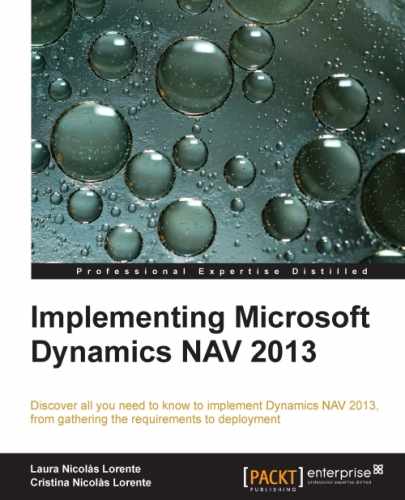Book Description
Discover all you need to know to implement Dynamics NAV 2013, from gathering the requirements to deployment
- Successfully handle your first Dynamics NAV 2013 implementation
- Explore the new features that will help you provide more value to your customers
- Full of illustrations and diagrams with clear step-by-step instructions and real-world tips extracted from years of experience
In Detail
Microsoft Dynamics NAV 2013 is an Enterprise Resource Planning (ERP) application used in all kinds of organizations around the world. It provides a great variety of functionality out-of-the-box in different topics such as accounting, sales and purchases processing, logistics, or manufacturing. But it also allows companies to grow the application by customizing the solution to meet specific requirements.
"Implementing Microsoft Dynamics NAV 2013" explains all you need to know to successfully handle your first Dynamics NAV 2013 implementation. You will learn what the application can do out of the box, how you can extend it to meet any kind of requirements, and how to manage real implementation projects with real customers.
This book does not only cover typical topics when implementing the new version of an ERP system; topics that are not found in any previous documentation of Dynamics NAV, such as the implementation process at the customer side, or implementing functional changes on existing Dynamics NAV implementations are included in here. This approach makes this book different.
After reading "Implementing Dynamics NAV 2013" you will be empowered with the skills and knowledge you need for successful implementations.
Table of Contents
- Implementing Microsoft Dynamics NAV 2013
- Table of Contents
- Implementing Microsoft Dynamics NAV 2013
- Credits
- About the Authors
- Acknowledgement
- Acknowledgement
- About the Reviewers
- www.PacktPub.com
- Preface
- 1. Introducing Microsoft Dynamics NAV 2013
- 2. What's New in NAV 2013
- Application changes
- Development changes
- IT changes
- Deprecated features
- Summary
- 3. Dynamics NAV – General Considerations
- 4. The Implementation Process
- 5. The Implementation Process on the Customer Side
- 6. Migrating Data
- Tools to migrate data
- Converting data from the old system to suit Dynamics NAV's needs
- Master data
- Open entries
- Historical data
- Open documents
- Choosing a go-live date
- Summary
- 7. Upgrading to Microsoft Dynamics NAV 2013
- Upgrading philosophy
- Upgrading process checklist
- Upgrading steps in detail
- Upgrading tools
- Summary
- 8. Development Considerations
- 9. Functional Changes on Existing Implementations
- 10. Data Analysis and Reporting
- 11. Debugging
- 12. The Query Object
- 13. Applications Included in Dynamics NAV
- Index
